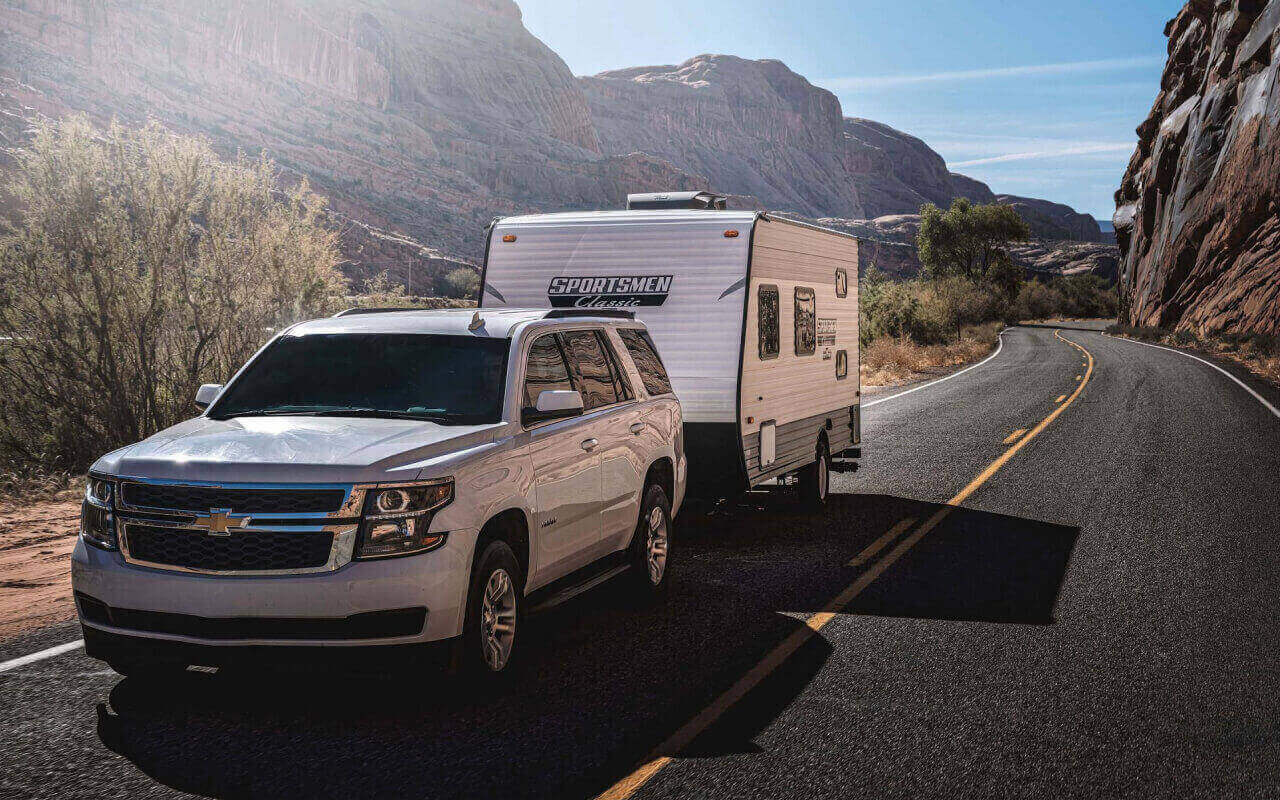If you’re a newbie to the world of travel trailers, getting behind the wheel and towing one can be a daunting experience. However, with the right driving tips and techniques, you can master the art of traveling with a trailer in no time. In this blog post, we’ll explore ten essential tips to help you navigate the roads with confidence and ease. Whether you’re planning a cross-country road trip or a weekend getaway, these tips will ensure a smooth and stress-free journey.
Understanding Your Travel Trailer’s Dimensions
Before embarking on any journey with your travel trailer, gaining an intimate knowledge of its dimensions is pivotal. Grasping the breadth, length, and stature of your trailer isn’t just about ensuring it fits in camping spots but also about enhancing your spatial awareness on the road. Engage in deliberate practice in an area free of constraints to acquaint yourself with how your trailer moves and occupies space. This exercise isn’t merely preparatory; it’s a foundational step in becoming adept at maneuvering through narrow passes, under low bridges, and around tight corners with confidence. Remember, familiarity with your trailer’s dimensions enriches your driving intuition, making navigation through varied environments less of a guessing game and more of a precise, well-informed journey.
The Importance of Proper Hitching Techniques
Securing your travel trailer correctly to your towing vehicle is a cornerstone of safe travel. Every journey should begin with a meticulous review of the hitching process. Verify that the hitch is locked in place, ensuring a robust connection between your vehicle and trailer. The integrity of safety chains cannot be overstressed; they serve as a critical fail-safe, forming a double layer of security. Additionally, a thorough inspection of the trailer’s lights is indispensable, as they communicate your intentions to fellow travelers and enhance visibility. The act of hitching your trailer is more than a preparatory step—it is a ritual that safeguards your voyage, transforming potential hazards into manageable risks. Embrace this practice with the gravity it deserves, and it will lay the groundwork for a journey that is not only enjoyable but secure.
Mastering the Art of Turning with a Trailer
Turning while towing a travel trailer is an exercise in precision and patience. The key strategy is to adopt a wider arc than usual when navigating corners. This adjustment accounts for the extended length your travel trailer contributes to your vehicle’s overall footprint, ensuring you don’t clip curbs or veer into adjacent lanes. Beginning this maneuver from a slightly more central position in your lane grants you the necessary space to complete the turn safely. It’s advisable to approach these maneuvers at a reduced pace, allowing you the time to correct your path as needed without risking control of your vehicle or trailer. Engaging in this practice within the confines of an empty parking lot presents an invaluable opportunity to familiarize yourself with the unique handling characteristics of your setup. Through repeated practice, the nuances of turning while towing will become second nature, bolstering your confidence and capability on the road.
Navigating Highways and Freeways
Embarking on the highways and freeways with a travel trailer in tow requires an elevated level of vigilance and strategy. Prioritize positioning your vehicle in the rightmost lane to facilitate ease of travel and accessibility to exits without abrupt maneuvers. It’s crucial to cultivate a buffer zone of space around you — this acts not only as a safeguard but also affords you the luxury of time to react to the unpredictable flow of traffic. Abrupt lane changes are your adversary here, for they compromise your control and the predictability essential for co-travelers’ safety. When it comes to velocity, adhere to a prudent speed that aligns with your comfort and the conditions of the road, resisting the temptation to keep pace with the general flow of faster-moving vehicles. Intersperse your journey with intervals of rest to rejuvenate your focus and maintain peak alertness. This approach to highway travel with your travel trailer not only heightens safety but enhances the overall pleasure of the journey.
Handling Hills and Steep Grades
Conquering hills and navigating steep grades with a travel trailer in tow is a nuanced skill that demands attention and a strategic approach. On the ascent, it’s crucial to engage in a measured increase in power to maintain momentum, while ensuring your vehicle does not strain excessively. Anticipate the hill ahead and adjust your speed accordingly, aiming for a consistent, manageable pace that keeps you moving forward without overburdening your engine. As you crest the hill and begin your descent, shift your focus to controlling your speed through engine braking, where appropriate, to minimize reliance on your brakes. Relying too heavily on your brakes can lead to overheating and decreased efficiency, particularly in a scenario where maintaining control is paramount. These adjustments are pivotal in managing the added gravitational forces at play, ensuring both your and your travel trailer’s safety on varied topographies. Engaging with these techniques refines your driving repertoire, adding layers of competence to your towing capability on challenging terrains.
The Significance of Regular Breaks and Checks
Embarking on extended journeys with a travel trailer mandates periodic pauses to recalibrate both mind and machinery. Diligently integrating stops into your voyage serves a dual purpose: it mitigates fatigue, enhancing your mental clarity and physical alertness, and it offers the opportunity to conduct essential inspections. During these intermissions, assess the integrity of your travel trailer’s hitch system, scrutinize the tires for wear or damage, and ensure all lights are functioning as expected. This regiment of regular breaks and checks is not merely a safety measure but a strategy to uphold the seamless operation of your travel adventure, allowing you to preemptively address potential issues before they escalate into tangible problems. Engage in this practice with the understanding that it fortifies your journey, making it as fluid as it is enjoyable.
Reversing with a Trailer – Tips and Tricks
Navigating a travel trailer in reverse demands a methodical approach, accentuated by patience and incremental learning. Initiate this maneuver by placing your hand at the bottom of the steering wheel; this orientation allows for intuitive directional adjustments — moving your hand to the right steers the trailer left, and vice versa. Visual cues are paramount, so rely heavily on your mirrors to maintain a comprehensive view of your trailer’s trajectory. Embrace a slow and steady pace, recognizing that each small steering input can significantly alter the course of your trailer. Anticipate the need for corrective actions, understanding that reversing is not a linear process but rather one of constant refinement and adjustment. Engaging with this practice in a measured, unhurried fashion cultivates a skill set that transforms the initially daunting task of reversing with a trailer into a manageable, even routine aspect of your driving repertoire.
Understanding and Adjusting to Weather Conditions
Navigating through changing weather conditions demands a proactive and adaptive driving strategy when towing a travel trailer. Preparation begins with a keen eye on the weather forecast, enabling you to anticipate and adjust your plans to mitigate potential challenges. In the dance with the elements, moderating your speed becomes a critical step in maintaining control, while expanding your following distance ensures you have ample space to react to sudden stops or shifts in traffic. Weather’s unpredictability calls for heightened alertness, especially when rain slickens the roadways or gusts of wind seek to test your trailer’s stability. Embrace these adjustments as part of the journey, viewing them as an opportunity to refine your skills in harmony with nature’s caprices. This proactive engagement with the weather not only safeguards your travel trailer adventure but also deepens your connection with the environment you traverse.
The Essentials of Travel Trailer Maintenance
Engaging with your travel trailer’s upkeep is a crucial aspect of ensuring a harmonious and enduring journey. Regular inspections and maintenance of your trailer’s tires, brakes, lights, and electrical systems are non-negotiable practices that underpin both safety and efficiency. Attention to these details prevents unexpected failures and extends the operational life of your mobile retreat. Prioritize cleanliness and proactive care, addressing signs of wear or malfunction promptly. This disciplined approach to maintenance is not merely about preserving functionality but about nurturing a reliable and dependable traveling companion. Adopt this regimen with diligence, and your travel trailer will reward you with unwavering performance across countless adventures.
Learning from Experience – The Value of Practice
Embracing the journey of towing a travel trailer, with its unique demands and nuances, is fundamentally a practice in learning by doing. Dedicate time to hone your skills in a range of scenarios, from the simplicity of straight-line travel to the complexity of negotiating tight spaces in reverse. With each practice session, your familiarity with the travel trailer’s behavior in various situations will deepen, enhancing your reaction times and decision-making processes. This iterative approach to learning — engaging in deliberate, focused practice — evolves your driving from novice uncertainty to proficient confidence. Let each mile traveled and every challenge encountered on the road serve as a lesson, progressively building your expertise and comfort with your travel trailer.

